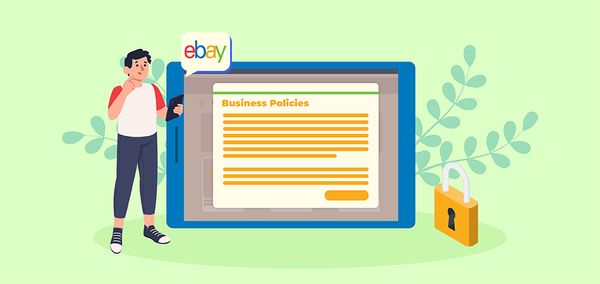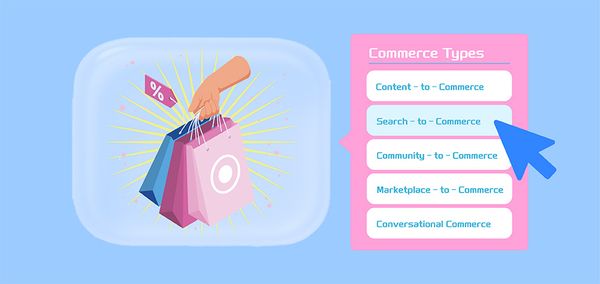SEO for Product Pages: 8 Essentials for eCommerce

Succeeding in AliExpress dropshipping requires eCommerce vitals working together. You need to choose the right product for dropshipping, set up ordering and logistics, and choose a winning pricing strategy. Apart from making the right strategic choices, there’s another critical element in the dropshipping eCommerce business: the product page.
The product page often serves as the first and last point of interaction between the business and the customer. For this reason, it has to be as compelling as a sales pitch for the product. On top of that, it should be easily discoverable on Google.
The last point is crucial if you want your eCommerce shop to bring profit in the long-term. How do you make your product pages rank high on Google search results? Continue with this article to learn more about the SEO of product pages and implement our tips.
Why Product Pages Crucial in eCommerce
Product pages are a top priority for eCommerce marketers. While social proof and trust are essential, the decision to purchase comes down to the product page.
As the product page serves as a sales pitch for both your product and brand, it has to have appealing copy and images to have a decent conversion. However, focusing on sales isn’t the only thing a successful eCommerce product page should do.
Product pages are often the first point of contact with your website. Customers search for products, not the stores that carry them. This is especially so for AliExpress dropshipping websites that may not have brand recognition.
This means product pages also have to be optimized for search. Thankfully, this doesn’t take much work, even for websites with hundreds of products. All you have to do is to set up a system based on best SEO practices and implement it across the website.
Here’s what you should consider when creating a template for all the product pages on your site.
SEO for eCommerce Product Page Essentials
SEO provides free traffic for years after being implemented. Building a template that works well may take a couple of days, but the work pays off within months. Here’s where to start.
1. Keyword Strategy
Keywords are the most defining aspect of any website or page. Choosing the right keywords to go on your product page may make or break its success, as they are the only thing Google can use to determine what the page is about and who to show it to.
Your first step in creating or optimizing a product page is finding the right keywords. You don’t want a keyword with the highest volume, though, you need a keyword that will convert better.
| Get Started Now to Grow Your Online Business with the Best AliExpress Dropshipping Tool - DSers! |
You can find such keywords by filtering for two factors. The first factor is how transactional the keyword is. Since your page sells a product, you don’t want to put informational keywords like “how to choose a wireless phone charger.”
The second factor is how well it fits the product. In this regard, a longer keyword that is a good match is better than one with lots of traffic. For instance, “buy Belkin MagSafe iPhone charger in Arizona” is better than “buy wireless phone charger”, even though it has much less traffic.
Find several keywords for each product page and include them in the text. So how many keywords should you add to each page for perfect optimization?
SE Ranking on-page SEO tool can help you with that. It analyzes competitors’ product pages from the SERP and suggests the perfect keyword ratio for each page. The tool is also handy for all sorts of product page SEO optimization tasks, from catching a missing title tag to ensuring the internal linking is set up correctly.
2. Titles and Meta Descriptions Optimization
User sees the title and meta description tags on the search engine results page, so they need to be enticed to click on your page. On top of that, the title tag needs to have the main keyword in it to signal to the search engine what the page is about, as Google uses it as one of the ways to rank a page.
Here’s a checklist you can follow to craft a good product page title.
- Mention the main keyword
- Mention your area if applicable
- Consider mentioning your brand
- Add product specifications like size, color, etc
- Add a CTA if possible
In the example above, the title is “Chargers & Power Accessories in NZ - Noel Leeming.” It signals what the page is about to both Google and the customer shows the brand name and tells them where the seller is located. These are good practices that you should follow.
The meta description here could use some improvement. When you don’t write one, Google will take whatever feels like the best snippet of text from the product page copy. You should write a unique description for each product page or generate one with AI.
Make sure each meta description appeals to the customer and includes a call to action. Here’s an example of a description that has a great CTA.
3. High-Quality Video and Imagery
Having stellar product photography and video reviews helps to improve the conversion rate, but it’s important that it doesn’t interfere with SEO.
Heavy image and video files can slow down the website load speed, decreasing the conversion rate dramatically. Most users will bounce after three seconds of loading.
Some internet users are fine with a lack of interactivity or video on a page as long as it loads fast. If you can minify images or video files without losing too much quality, do it. Consider embedding videos from YouTube or Vimeo instead of hosting them on your site. If you can’t do that effectively, prioritize loading so that most of the page loads within a couple of seconds and heavy files follow suit.
Another thing you can do to optimize images for search is adding alt text tags. These tags tell Google’s algorithm what’s on the picture and can serve as another place to put crucial keywords. The images also have a higher chance of showing up on Google Images.
4. Structured Data for Product Pages
Structured data breaks down the images and text on your product page into tagged data that’s easy to understand for a search engine. It was critical years ago, and is even more important now as Google has expanded eCommerce features where structured data can give an advantage.
The first advantage it gives your page is having additional elements on search engine results pages. This can include navigational links, product images, price, rating, availability, etc.
If you want to take this feature further, get a Google Merchant Center account and submit product pages with structured data. Your products will appear on Google’s shopping page, Google Images, and Google Lens searches for free, increasing exposure to interested shoppers.
To add structured data to your product pages, you can use a Schema markup add-on for WordPress or follow Google’s product structured data guidelines.
5. User-Generated Content
User-generated content, or UGC, is content created by your customers and brand advocates — photos with your product, videos, testimonials, etc. It is excellent for conversion as it adds an authenticity that some eCommerce websites may lack. Serving at least one form of UGC increases conversion by 8%, while users who interact with UGC are twice as likely to make a purchase.
UGC can also help with SEO for product pages, especially in niches where the number of backlinks may not play a huge role because of low competition. Simply adding authentic customer reviews to the product page may improve rankings and traffic.
It’s also a good idea to encourage user-generated content on third-party websites like social media sites or blogs. This helps with link-building and establishing your brand.
6. Page Load Speed Optimization
The more time your product page takes to fully load, the more customers it loses. The optimal loading time is three seconds, anything longer than that may produce high bounce rates.
If you’re not sure how fast the pages on your website load, you can run a quick check with the Chrome Lighthouse tool. To do that, press F12 on a page, go to the Lighthouse tab, and click “Generate a report.”
It will show a rating for loading speed and other core web vitals for your website.
This tool also suggests how to make your site load faster.
Some common areas of improvement include:
- Switching to a better hosting with a CDN,
- Optimizing JS for efficient loading,
- Loading third-party code like Google Analytics after the page,
- Changing image format,
- Minifying images and code,
- Implementing caching.
7. FAQ section
A well-written product page has to be brief and concise. You don’t want your customers to read an essay to understand what they’re purchasing.
At most, you may have a 200-word product description on top of product characteristics. This leaves you with little to no space to put all the keywords you may have for any specific page.
The perfect solution for this is the FAQ section. It can provide additional space to put keywords into and help customers understand the product better.
You can pull FAQ ideas from Google’s People Also Ask section.
The important thing when writing this section is to provide helpful information to the user instead of simply stuffing keywords in there.
8. Products Canonicalization
Most eCommerce websites have hundreds of product pages, not all of them are completely unique. The same product may have different variants in color, size, other attributes or appear on different category pages. This means a dozen pages may look like duplicated ones.
The recommended solution in such cases is to canonicalize these pages. Pick a page you believe should appear in search results and add a rel=“canonical” tag leading to it from the HTTP headers of all the duplicate pages. You can also make that page a self-referencing canonical URL by adding a canonical tag that leads to itself.
This simple tip can save your product pages from being cannibalized by Google, which may lead to the wrong page popping up in search.
Final Words
Product page SEO is all about setting up systems that you will use to form dozens, possibly hundreds of pages. Settling on a page structure that is both good for sales and optimized for search engines is a long process involving much trial and error.
However, tackling this from the get-go will free up your time later in your business journey. Implement these tips, and you can use the template you’ve made for all your eCommerce websites.
With a working SEO solution out of the way and logistics handled by DSers, all you’re left to do is choose the right product and market it within your network.













 Company
Company
 Why Choose DSers
Why Choose DSers
 Blog
Blog
 Help Center
Help Center




 Live Chat
Live Chat